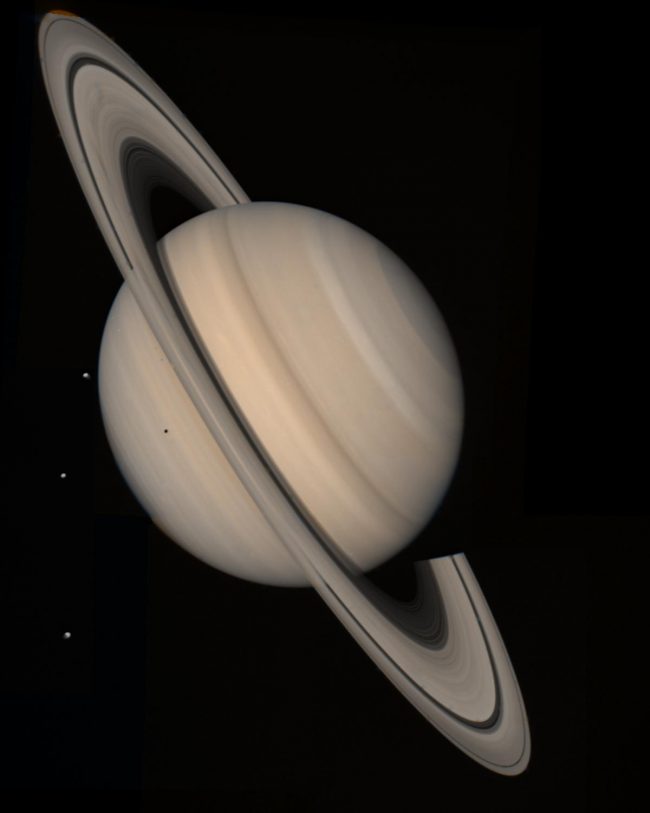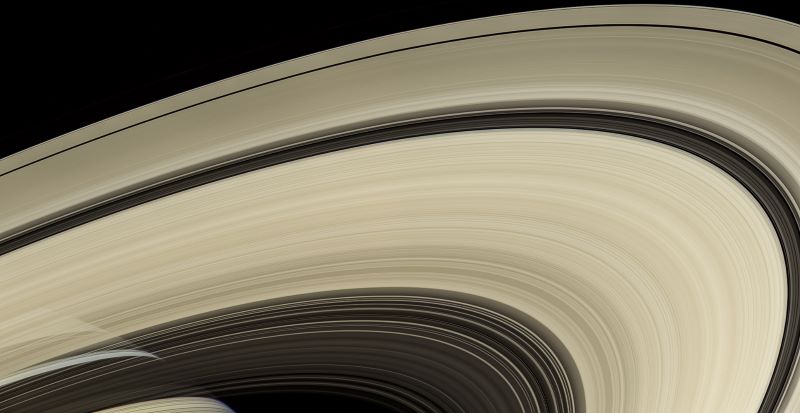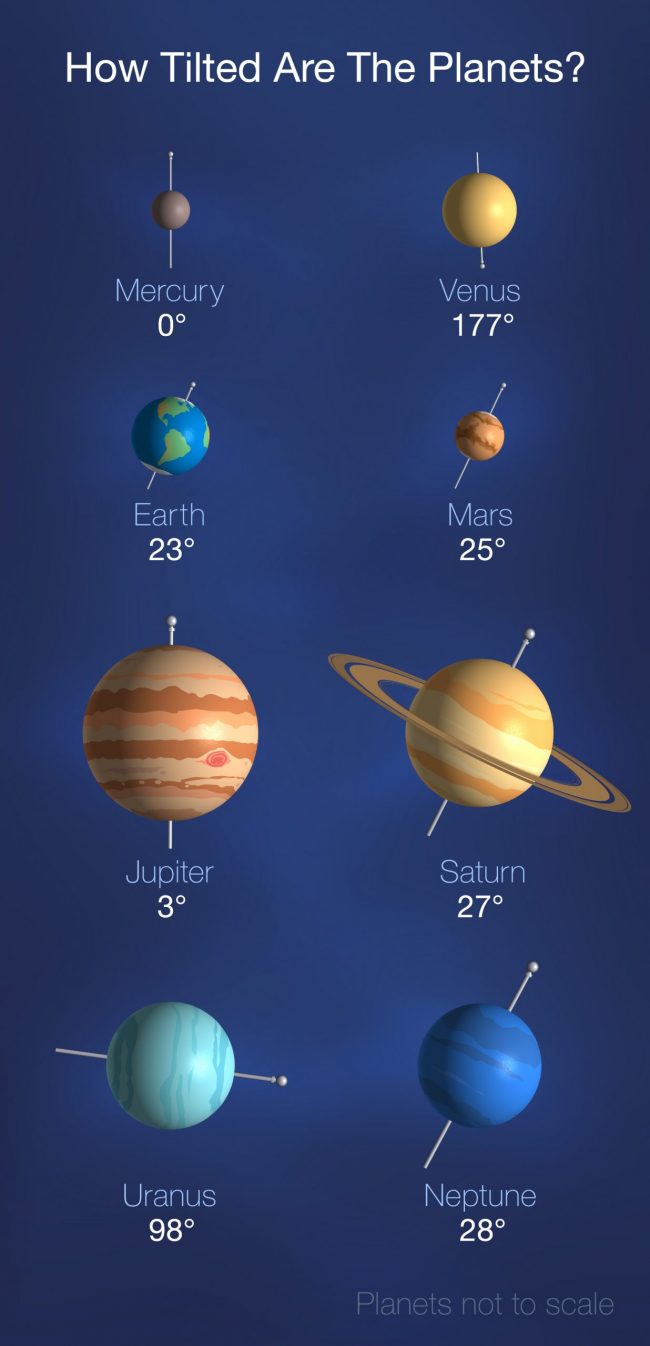
Transformation from moon to rings
While Saturn’s rings are massive and majestic, the ring systems of other gas giant planets in our solar system are vanishingly thin. And scientists have wondered … why? On September 15, 2022, scientists at UC Berkeley said think Saturn’s rings and tilt are linked. They think that, 160 million years ago, a large moon of Saturn tore apart and became the planet’s rings. They dubbed this lost moon Chrysalis, for its power to transform from a moon into rings, much as an insect chrysalis produces a moth or a butterfly.
The scientists, led by Jack Wisdom of MIT, published their study this week in the peer-reviewed journal Science.
Saturn’s rings 100 million years old, or less
In 2019, a team of scientists concluded that Saturn’s rings are relatively recent in contrast to the planet itself. Saturn presumably formed with the rest of the solar system, some 4.5 billion years ago. But, these scientists said, their work showed the rings to be a newer feature, having formed 100 million years ago or less.
The 2022 study goes further. It proposes that Saturn’s ring system comes from a moon that was once about the size of Iapetus, the 3rd-largest moon of Saturn. They theorized that this moon got too close to Saturn. If so, they said, Saturn would have swallowed 99% of the erstwhile moon’s mass. While the rest of the former mass of the moon became Saturn’s rings. Jack Wisdom explained:
[Saturn’s] tilt is too large to be a result of known formation processes in a protoplanetary disk or from later, large collisions. A variety of explanations have been offered, but none is totally convincing. The cool thing is that the previously unexplained young age of the rings is naturally explained in our scenario.

Saturn-Neptune connection
Though Saturn and Neptune are a billion miles apart in space, they still have a connection. The astronomers’ statement explained:
Astronomers have suspected before that Saturn’s axial tilt comes from gravitational interactions with its outer companion, Neptune. [That’s] because Saturn’s tilt precesses, like a spinning top, at nearly the same rate as the precession of the orbit of Neptune. Such an interaction is called a resonance.
In the new study, the researchers conclude that, for billions of years, Neptune and Saturn were in a resonant dance that caused the tilt of Saturn’s spin axis. But the outward movement of Saturn’s moon Titan — the 2nd-largest moon in the solar system — destabilized the Saturn system, causing it to lose a moon and fall out of resonance.
The result, they asked? A bright and beautiful set of rings that grace Saturn today.
Saturn’s lost moon Chrysalis
Some solar system objects, such as Mercury and Jupiter, have almost no tilt with respect to the plane of the solar system. Their axes are almost upright, with respect to their orbits around the sun. Other objects, including Earth and Saturn, have large axial tilts. Earth tilts by some 23.5 degrees from upright. And Saturn’s tilt is 26.7 degrees. One reason for Saturn’s large tilt might have been its precession resonance with Neptune. Scientists said this resonance would have turned a slight tilt for Saturn into a big tilt.
For the new study, Wisdom needed to know how much angular momentum Saturn has. MinutePhysics has described momentum as “how much oomph a body has when it’s going in a straight line” and angular momentum as “a way to account for how much oomph objects have when they’re going in circles.” A higher angular momentum would give Saturn more oomph for resisting an outside force. Such as, an influence from the sun or other planets. So he asked Burkhard Militzer of UC Berkeley for help. Militzer’s team was able to use measurements from the Cassini mission to provide a precise measurement of Saturn’s angular momentum. And the team was surprised to see that Saturn’s angular momentum was just a tiny bit too small for it and Neptune to be in resonance today.
However – and here’s the kicker – calculations showed that Saturn and Neptune would have been in resonance if Saturn had once had an additional moon.

Breaking up is hard to do
So – assuming Saturn and Neptune were once in resonance – how did they break it off? Computer simulations suggest the most likely scenario is that – at some point – Saturn’s large moon Titan got into resonance with the lost moon, Chrysalis. If this happened, it would have destabilized the orbit of Chrysalis.
And if the orbit of Chrysalis became unstable, eventually Chrysalis would have moved too close to Saturn. And, at that point, Saturn’s gravity would have torn the moon apart. What was left of Chrysalis – whatever didn’t fall into Saturn – became Saturn’s glorious ring system. These scientists used the speed at which Titan is moving away from Saturn today to estimate just when Chrysalis would have become destabilized, and ultimately destroyed. Turns out it was some 100 to 200 million years ago.
And – if you’ll recall from above – that number matches current estimates for the age of Saturn’s rings.
These scientists said – as scientists often say – that more precise measurements in the future will help them confirm their theory. Wisdom commented:
It’s a pretty good story. But like any other result, it’ll have to be examined by others. But it seems that this lost satellite was just a chrysalis, waiting to have its instability.

Bottom line: A new study suggests a lost moon of Saturn – which scientists are calling Chrysalis – came too close to Saturn and was torn apart, forming the ring system we see today.











